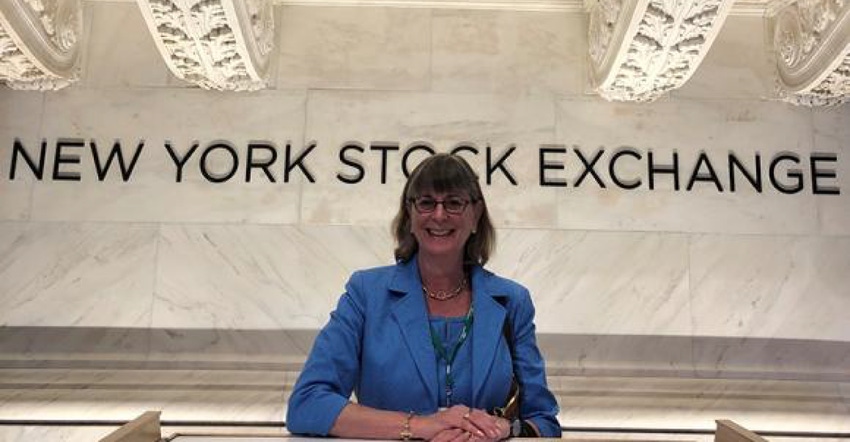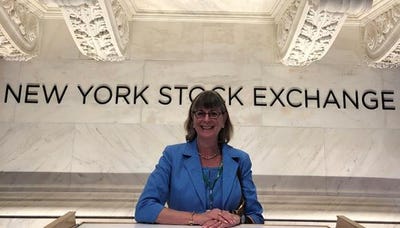
In this month’s edition of Business Report, we return to highlight the sometimes unexpected twists and turns resulting from the coronavirus pandemic, this time focusing on recycling and sustainability impacts.
Recycling Programs Cut—Safety and Economics versus the Supply Chain Inputs
Waste Dive keeps a running tally of curbside recycling program cuts or cancellations, which has reached around 90 by their count and continues to grow. A significant number of suspensions were initially caused by safety issues—either overburdened front-line workers who had to focus on picking up greater amounts of residential garbage, or shutdowns of processing capability, given staff shortages and distancing issues at material recovery facilities (MRFs). It should be noted, however, that more than a dozen of these programs have since resumed, as haulers have either adapted or MRFs have altered processing procedures to allow for social distancing and/or slowed the lines. In recent weeks, though, multiple cancellations have resulted from financial considerations, as municipalities and states face budget shortfalls as a result of the pandemic, given rising costs and tax revenue shortfalls.
In a Waste360 webinar “Creating a Sustainable World Post Pandemic”, participants noted municipal budget shortfalls as a major new risk to recycling programs—SOMETHING has to be cut and it’s often recycling. In a recent Solid Waste Association of North America (SWANA) webinar “Recycling in Uncertain Times—The Path Forward”, the CEO of TerraCycle, Tom Szaky, succinctly noted that the “business equation of recycling is suffering”, with the well-known impact of China’s recycled material import restrictions all but closing a key end market, now compounded by the knock-on impact of plummeting oil prices on recycled plastics pricing . Additionally, the long ongoing issues stemming from the light-weighting of packaging, combined with the even more contentious contamination issues as a result of the shift from commercial to residential recycling volumes as a result of the pandemic, have resulted in a further decline in the quality and end value of the recycled material.
All that said, the pandemic has also brought into focus the importance of recycled materials to supply chains, particularly in key areas such as paper products that are now in high demand. According to the American Forest and Paper Association (AF&PA), over a third of the nation’s total fiber requirements are met using recycled materials, and 56 percent of tissue production uses recycled paper as a feedstock.
OCC and Mixed Paper Dynamics Versus Varied and Unintended Impacts on UBCs, PET and Glass
As noted above, the importance of recycled material to the supply chain is currently best illustrated in the fiber market. The combination of stay-at-home orders and business closures hit the recycled paper supply very hard, just as toilet paper demand (among other paper products) skyrocketed. Recovered paper collection is estimated to have declined by 30-50 percent in the second half of March and April. As a result, old corrugated cardboard (OCC) pricing has risen to more than $100 per ton from $32 per ton a year ago. Given some ability to substitute or use mixed paper as a feedstock (notably Pratt Industries), even mixed paper pricing has risen to positive territory—fetching $12 per ton versus a negative value of $2 per ton prior to COVID-19. In general, mills expect recycled paper pricing to stay elevated at least through the second quarter.
Also as previously noted, recycled plastic pricing and the viability of recycled plastic as a feedstock, particularly for PET, is being undercut by the low cost of virgin plastic, driven by the plunge in oil prices. Additionally, the pandemic has also roiled the mechanics of the supply chain, particularly for food and beverage-grade recycled plastics, aluminum and glass. Nine out of the 10 states that have bottle deposit systems have essentially suspended their enforcement of the requirement that retailers redeem bottles. Thus, many container redemption programs or locations nationwide have been largely suspended or closed down, often for safety reasons, or due to personnel, such as grocery store workers, being redeployed to more essential functions.
The lower collection and processed volumes from these coveted sources (as they are cleaner than residential curbside program sources) has created a supply shortage, just as the consumer brand companies were on the verge of ramping up their recycled content use to meet stated goals in response to the plastic backlash that was rampant before the pandemic. It is estimated that the current supply of recycled plastic is only a fraction of what would be necessary for the consumer brands to meet their recycled content goals. Yet, PET pricing has been cut in half. The container deposit and container redemption issues have similarly roiled the aluminum market, mostly notably for used beverage containers (UBCs), and glass recycling markets. The aluminum market had been sliding prior to COVID-19 due to a variety of global trade factors, and now the container deposit and redemption suspensions are creating another choke point in the supply of UBCs—which make up 43 percent of the feedstock for new aluminum cans—as container deposit states are responsible for 30-40 percent of all the UBCs that are recycled back into containers. UBC pricing is down by about a third over the past year.
Similarly, the collection volumes of recycled glass are also notably down, as a result of the same suspensions, compounded by the number of beer and wine bottles that are no longer coming from bars and restaurants. According to the Glass Packaging Institute, about 60 percent of the recycled cullet used in glass bottles and jars comes from deposit states, while only 13 percent of the material recovered through curbside recycling makes its way back into those products. This is at the same time that we are all arguably drinking more at home. In fact, the Wall Street Journal (WSJ) reported that in Michigan alone, more than half a billion empties, or $60 million worth in deposits, are piled up in Michigan homes, garages and cars!
Sustainability Efforts Take a Back Seat, But There Are Some Bright Spots
Probably one of the most notable sustainability efforts that has taken a step back is in the area of single-use plastics. Given public health safety and sanitation concerns given the pandemic, plastic bag bans and fees have been delayed or rolled back in numerous places, notably California, Connecticut, Massachusetts, Maine and New York, and needless to say, the plastics industry is losing no time in marketing the health safety and hygiene aspects of various plastic disposables, particularly personal protection equipment such as masks and gloves and takeout food containers.
The renewable natural gas (RNG) sector has also been pressured, due to low oil prices and potentially, dairy farm downsizing. Yet, some bright spots have emerged. The Recycling Partnership recently released its 2020 Impact Report, which noted that it has successfully catalyzed $91 million of investment in the recycling system, aiding more than 1500 communities to overcome recycling challenges. The report also addressed and stressed the need to unlock more recycled materials supply from community collection programs. TerraCycle’s Szaky noted that though refillable container use at grocery stores has certainly suffered as a result of the pandemic, its Loop initiative, whereby consumers ship back reusable containers to consumer product companies and retailers through the LOOP system, has continued to gain traction, with 15 major retailers, 400 brands and 100,000 consumers participating, though it needs more scale to become profitable, which it anticipates will take two to three years. And, packaging firm Ball Corp. continues to work on its aluminum drinking cup efforts, touting aluminum cups as infinitely recyclable.
Interestingly, despite perceived sustainability setbacks, a recent WSJ article “ESG Investing Shines in Market Turmoil” noted that funds focused on socially responsible investing have been a rare bright spot in this year’s earlier stock market meltdown. There were large inflows into ESG funds compared to the S&P 500 in March and April. It should be noted, however, that these funds tend to have a higher weighting of Big Tech and a lower energy weighting, which may explain a portion of the outperformance.
About the Author(s)
You May Also Like




